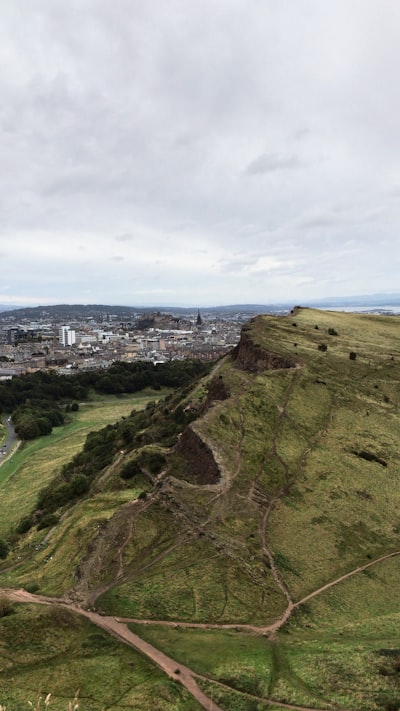
Edinburgh Castle: Perched atop an ancient volcanic rock, Edinburgh Castle is the iconic centerpiece of the city. Explore the historic fortress, witness the firing of the One o'Clock Gun, and marvel at the stunning views of the city. Royal Mile: The Royal Mile is the heart of Edinburgh's Old Town, stretching from Edinburgh Castle to the Palace of Holyroodhouse. Stroll along this vibrant street, lined with charming shops, pubs, and historic landmarks such as St. Giles' Cathedral and the John Knox House. Palace of Holyroodhouse: This royal residence is the Queen's official residence in Scotland. Tour the palace's opulent state apartments, explore the ruins of the 12th-century Holyrood Abbey, and learn about the rich history of the Scottish monarchy. Arthur's Seat: Climb to the top of this extinct volcano for breathtaking panoramic views of Edinburgh and the surrounding countryside. The hike offers a peaceful escape from the city and a chance to immerse yourself in the natural beauty of the region. National Museum of Scotland: Discover the rich history and culture of Scotland at this world-class museum. Explore exhibits on Scottish history, art, science, and technology, and marvel at the impressive collections, including the famous Lewis Chessmen. Calton Hill: Ascend to the top of Calton Hill for stunning views of the city and the Firth of Forth. The hill is home to several iconic landmarks, including the National Monument, the Nelson Monument, and the Dugald Stewart Monument. Grassmarket: This lively square in the Old Town was once the site of public executions and is now a hub of shops, pubs, and restaurants. Wander through the charming cobblestone streets, browse the local artisan stalls, and soak up the vibrant atmosphere. Dean Village: Escape the hustle and bustle of the city and explore this picturesque former milling village, nestled along the Water of Leith. Admire the charming historic buildings, stroll along the peaceful riverbanks, and discover the tranquil beauty of this hidden gem. Royal Botanic Garden: Immerse yourself in the stunning natural beauty of the Royal Botanic Garden, one of the world's finest botanical gardens. Stroll through the serene gardens, marvel at the impressive glasshouses, and learn about the diverse plant life. Whisky Distilleries: Edinburgh is the perfect base to explore Scotland's renowned whisky culture. Visit one of the many distilleries in the region, such as Glenkinchie or Dalmore, to learn about the art of whisky-making and sample the finest drams.
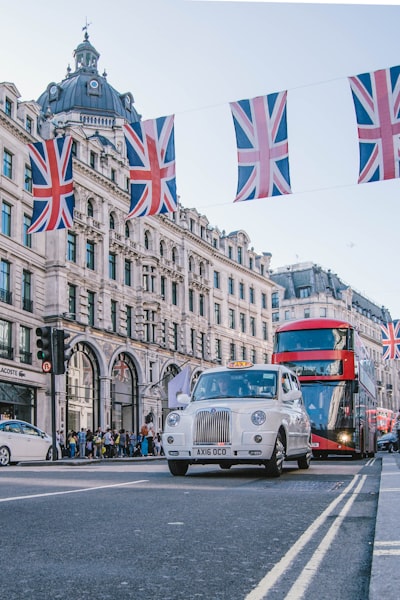
Buckingham Palace Buckingham Palace is the official London residence of the Queen. Visitors can tour the State Rooms, which are lavishly decorated and used for official functions. The Changing of the Guard ceremony, where the Queen's Guard is replaced, is a popular event to witness. Tower of London The Tower of London is a historic castle on the River Thames. It has served as a royal residence, prison, armory, and even a zoo. Visitors can see the Crown Jewels, explore the towers, and learn about the tower's rich history from the Yeoman Warders. Westminster Abbey Westminster Abbey is a Gothic abbey church that has been the site of royal weddings and coronations for centuries. It is the final resting place of many famous British figures, including kings, queens, and poets. Visitors can tour the abbey and attend religious services. Big Ben and the Houses of Parliament Big Ben is the iconic clock tower that is part of the Houses of Parliament, the meeting place of the UK government. Visitors can take a tour of the Houses of Parliament and learn about the history and workings of the British government. The British Museum The British Museum is one of the largest and most comprehensive museums in the world, with a collection that spans over two million years of human history and culture. Highlights include the Rosetta Stone, the Elgin Marbles, and the Egyptian mummies. Natural History Museum The Natural History Museum is a stunning Victorian-era building that houses an impressive collection of natural history exhibits, including dinosaur skeletons, wildlife dioramas, and geological specimens. Hyde Park Hyde Park is a large royal park in central London that is popular for walking, cycling, and relaxing. Visitors can also see the Serpentine, a large lake in the park, and the Diana, Princess of Wales Memorial Fountain. Trafalgar Square Trafalgar Square is a famous public square in central London, known for its iconic Nelson's Column and the surrounding fountains and statues. It is a popular gathering place and often hosts events and demonstrations. The London Eye The London Eye is a giant Ferris wheel on the South Bank of the River Thames that offers panoramic views of the city. Visitors can take a ride in one of the capsules and see landmarks like the Houses of Parliament and the Tower of London. Borough Market Borough Market is a lively and historic food market that offers a wide variety of fresh produce, baked goods, and international cuisine. It's a great place to sample local and artisanal foods. Camden Market Camden Market is a vibrant and eclectic market that is known for its alternative fashion, music, and street food. Visitors can browse the stalls, listen to live music, and soak up the unique atmosphere. Notting Hill Notting Hill is a trendy and colorful neighborhood in west London that is known for its charming streets, independent shops, and the annual Notting Hill Carnival.
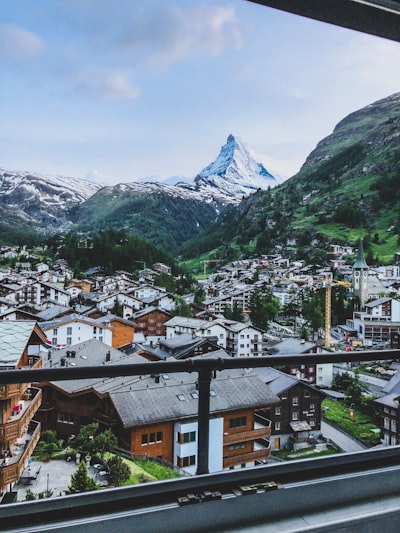
The Old Town of Bern: Designated as a UNESCO World Heritage Site, the Old Town of Bern is a well-preserved medieval city center that features stunning architecture, cobblestone streets, and a unique covered walkway system known as the Lauben. Highlights include the Zytglogge, a medieval clock tower with an elaborate astronomical clock, and the Bern Minster, a magnificent Gothic cathedral. Bern Rose Garden: Perched atop the Kleine Schanze, the Bern Rose Garden offers breathtaking views of the Old Town and the Aare River. The garden features over 200 varieties of roses and is a popular spot for relaxation and scenic photography. Bern Historical Museum: This museum is one of the largest history museums in Switzerland, showcasing a comprehensive collection of artifacts and exhibits that trace the city's rich history, from its medieval origins to the present day. Highlights include the Bernese Costume Collection and the Bernese Silver Collection. Zentrum Paul Klee: Dedicated to the renowned Swiss artist Paul Klee, this modern art museum features an impressive collection of Klee's works, as well as temporary exhibitions and educational programs. Gurten: Bern's local mountain, the Gurten, offers stunning panoramic views of the city and the surrounding Alps. Visitors can reach the summit by taking a funicular railway or hiking, and enjoy a variety of outdoor activities, such as hiking, biking, and picnicking. Bern Bear Park: Located along the Aare River, the Bern Bear Park is home to a colony of bears, which have been the symbol of the city for centuries. Visitors can observe the bears in their natural habitat and learn about their history and conservation efforts. Bundeshaus (Swiss Parliament Building): The Bundeshaus, or Swiss Parliament Building, is a grand neoclassical structure that houses the Swiss federal government. Visitors can take guided tours of the building and learn about the country's political system. Munster Terrace: The Munster Terrace is a scenic viewpoint that offers panoramic vistas of the Old Town, the Aare River, and the distant Alps. It is a popular spot for photography and relaxation. Bern Minster: The Bern Minster is a magnificent Gothic cathedral that took over 400 years to complete. Visitors can climb the 344 steps to the top of the tower for stunning views of the city. Barengraben (Bear Pits): The Barengraben, or Bear Pits, are a historic bear enclosure located along the Aare River. Visitors can observe the bears and learn about their significance in Bern's history. Kunstmuseum Bern: The Kunstmuseum Bern is one of the oldest art museums in Switzerland, housing a vast collection of Swiss and international art, including works by renowned artists such as Paul Klee, Wassily Kandinsky, and Pablo Picasso. Bern Botanical Garden: The Bern Botanical Garden is a peaceful oasis in the heart of the city, featuring a diverse collection of plants, greenhouses, and themed gardens, such as the Alpine Garden and the Medicinal Plant Garden. Bern Historical Museum of the Swiss Abroad: This museum explores the history and experiences of Swiss citizens who have lived and worked abroad, offering insights into the country's global connections and diaspora. Bern Altstadt (Old Town): The Bern Altstadt, or Old Town, is a well-preserved medieval city center that is a UNESCO World Heritage Site. Visitors can stroll through the charming streets, admire the historic architecture, and explore the city's many shops, cafes, and restaurants. Zytglogge (Clock Tower): The Zytglogge is a medieval clock tower that features an elaborate astronomical clock and a daily performance of moving figures, making it one of Bern's most iconic landmarks.
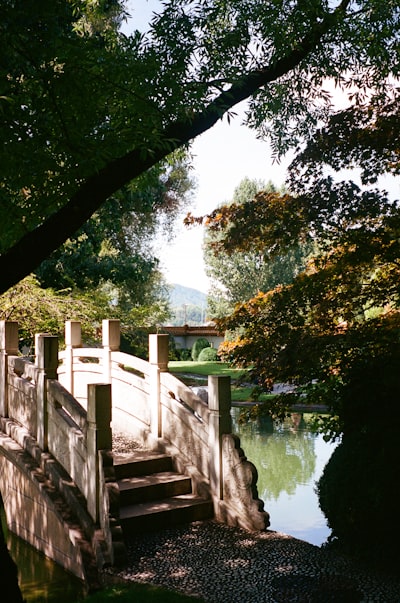
Old Town (Altstadt): Explore the charming cobblestone streets and medieval architecture of Zurich's Old Town, a UNESCO World Heritage Site. Stroll along the Bahnhofstrasse, one of the world's most exclusive shopping streets, and visit the Grossmünster, a Romanesque-style church with stunning views from its towers. Lake Zurich (Zürichsee): Take a boat tour or simply relax by the serene waters of Lake Zurich, which offers stunning views of the city and the surrounding Alps. Enjoy the lively atmosphere of the lakeside promenades and parks, and visit the Bürkliplatz, a popular gathering spot for locals and tourists alike. Swiss National Museum (Schweizerisches Nationalmuseum): Discover the rich history and culture of Switzerland at the Swiss National Museum, which houses an impressive collection of artifacts, artworks, and interactive exhibits. Highlights include the medieval and Renaissance collections, as well as the museum's stunning neo-Renaissance architecture. Kunsthaus Zürich: Admire the impressive collection of art at the Kunsthaus Zürich, one of the most important art museums in Europe. The museum's highlights include works by renowned artists such as Monet, Picasso, and Warhol, as well as a strong focus on Swiss art. Uetliberg: Climb to the top of the Uetliberg, Zurich's local mountain, for panoramic views of the city and the surrounding countryside. Take the train or hike up the mountain and enjoy the scenic trails and hiking paths. Bahnhofstrasse: Indulge in some retail therapy along the Bahnhofstrasse, a renowned shopping street that is home to high-end boutiques, luxury brands, and department stores. Even if you're not in the mood to shop, the street is a great place to people-watch and soak up the vibrant atmosphere. Fraumünster Church: Visit the Fraumünster Church, a medieval church known for its stunning stained-glass windows designed by the renowned artist Marc Chagall. Admire the intricate and colorful designs that depict biblical scenes. Lindt & Sprüngli Chocolate Factory: Indulge in the ultimate chocolate experience at the Lindt & Sprüngli Chocolate Factory, where you can take a guided tour, learn about the chocolate-making process, and sample some of the finest Swiss chocolates. Rietberg Museum: Explore the diverse collection of non-European art and culture at the Rietberg Museum, which features exhibits from Asia, Africa, and the Americas. The museum's beautiful gardens and pavilions are also worth a visit. Zurich Opera House (Opernhaus Zürich): Attend a performance at the Zurich Opera House, one of the world's leading opera houses, and experience the city's vibrant cultural scene. The building itself is a stunning example of 19th-century architecture.
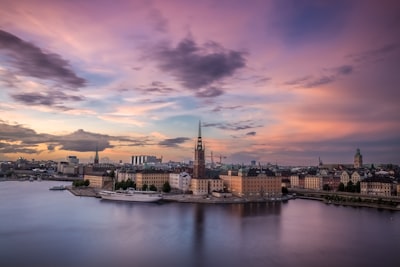
The Royal Palace The Royal Palace is the official residence of the Swedish monarch and one of the largest palaces in Europe. Visitors can explore the opulent state apartments, the Armory, the Treasury, and the Royal Chapel. The changing of the guard ceremony is a popular daily event. Gamla Stan Gamla Stan is the charming old town of Stockholm, dating back to the 13th century. Wander the cobblestone streets lined with colorful buildings, browse the quaint shops and galleries, and visit historic sites like the Nobel Museum and the German Church. Vasa Museum The Vasa Museum houses the remarkably well-preserved 17th-century warship Vasa, which sank on its maiden voyage in 1628 and was salvaged in 1961. The museum provides a fascinating glimpse into Sweden's maritime history. Skansen Open-Air Museum Skansen is the world's oldest open-air museum, showcasing traditional Swedish architecture, crafts, and folkways. Visitors can explore historic buildings, watch artisans at work, and see Nordic animals like bears, wolves, and lynx. Stockholm City Hall The iconic City Hall, with its distinctive blue-green copper roof, is home to the Nobel Prize banquet and offers guided tours of its lavish interiors, including the Golden Hall and the Council Chamber. Fotografiska Fotografiska is a world-renowned photography museum housed in a former customs house. It features cutting-edge temporary exhibitions by both established and up-and-coming photographers, as well as a renowned restaurant. Djurgården Djurgården is a picturesque island that serves as a green oasis in the heart of Stockholm. Visitors can explore museums, amusement parks, and historic sites, or simply enjoy the peaceful natural surroundings. Drottningholm Palace Drottningholm Palace, a UNESCO World Heritage Site, is the private residence of the Swedish royal family and one of the best-preserved royal castles from the 17th century. Visitors can tour the palace, gardens, and the Chinese Pavilion. Stockholm Metro Art The Stockholm metro system is renowned for its extensive network of art installations, with over 150 decorated stations showcasing a wide range of styles and mediums, from mosaics to sculptures to paintings. Södermalm Södermalm is a trendy, bohemian neighborhood known for its independent boutiques, vintage shops, cafes, and vibrant nightlife. Explore the charming streets and take in the stunning views of the city. Moderna Museet The Moderna Museet is Sweden's premier museum of modern and contemporary art, featuring an impressive collection of works by renowned artists such as Picasso, Dalí, and Warhol. Archipelago Boat Tour Take a boat tour of the Stockholm archipelago, a stunning network of over 30,000 islands, islets, and skerries. Enjoy the scenic views, visit picturesque fishing villages, and experience the tranquility of the Swedish countryside. Kungsträdgården Kungsträdgården, or the King's Garden, is a lively public square and park in the heart of Stockholm, known for its cherry blossoms in the spring, outdoor concerts, and vibrant atmosphere. Östermalm Östermalm is an upscale neighborhood known for its high-end shopping, gourmet restaurants, and elegant architecture. Stroll along the tree-lined streets and browse the exclusive boutiques and galleries. Riddarholmen Church The Riddarholmen Church is the burial site of Swedish monarchs, dating back to the 13th century. Visitors can admire the impressive Gothic architecture and the royal crypts.

La Sagrada Familia The iconic Basilica of the Sagrada Familia is Barcelona's most famous landmark and a must-see attraction. Designed by the renowned architect Antoni Gaudí, this unfinished Roman Catholic church is a stunning example of Catalan Modernist architecture. Visitors can marvel at the intricate facades, stained glass windows, and towering spires, as well as explore the interior with its grand naves and impressive vaulted ceilings. Park Güell Another of Gaudí's masterpieces, Park Güell is a whimsical public park filled with colorful, undulating structures, mosaic-covered benches, and stunning views of the city. Wander through the park's winding paths, admire the iconic dragon staircase, and enjoy the panoramic vistas from the Terrace of the Thirty-Six Columns. Las Ramblas A bustling tree-lined pedestrian mall, Las Ramblas is the heart of Barcelona's old town. Stroll along this vibrant street, taking in the lively atmosphere, street performers, outdoor cafes, and local vendors selling flowers, souvenirs, and more. Be sure to visit the iconic La Boqueria market, a bustling food hall with an incredible array of fresh produce, meats, seafood, and local delicacies. Barri Gòtic (Gothic Quarter) Immerse yourself in the charming medieval atmosphere of Barcelona's Barri Gòtic, the city's historic Gothic Quarter. Wander the narrow, winding streets lined with ancient buildings, churches, and plazas, and discover hidden gems like the 14th-century Barcelona Cathedral, the Plaça del Rei, and the remains of the ancient Roman walls. Montjuïc Offering panoramic views of the city, Montjuïc is a hill located southwest of the city center that is home to a variety of attractions. Explore the Montjuïc Castle, a 17th-century fortress with stunning vistas, visit the Miró Foundation to see the works of the renowned artist Joan Miró, and stroll through the beautiful Montjuïc Gardens. Passeig de Gràcia One of Barcelona's most prestigious boulevards, Passeig de Gràcia is a shopper's paradise lined with high-end boutiques, restaurants, and architectural gems. Admire the iconic buildings designed by Gaudí, including Casa Batlló and La Pedrera, and stop to marvel at the stunning Fountain of the Three Graces. Museu Picasso Housing one of the world's most extensive collections of Pablo Picasso's works, the Museu Picasso is a must-visit for art enthusiasts. Explore the artist's early works, his Blue and Rose periods, and his interpretations of the Old Masters, all displayed in a beautiful 13th-century medieval palace. Tibidabo Offering panoramic views of Barcelona, Tibidabo is a mountain that can be reached by a historic funicular railway. At the top, visitors can enjoy the Tibidabo Amusement Park, with its vintage rides and attractions, as well as the Sagrat Cor church, a stunning neo-Gothic temple with stunning city views. Barceloneta Beach No trip to Barcelona is complete without a visit to the city's iconic Barceloneta Beach. Relax on the golden sands, take a dip in the Mediterranean Sea, and enjoy the lively atmosphere of the beachfront promenade, lined with seafood restaurants, bars, and beach clubs. Mercat de la Boqueria Immerse yourself in the vibrant sights, sounds, and smells of Barcelona's famous Mercat de la Boqueria, one of the largest and oldest food markets in Europe. Wander through the stalls, sampling fresh produce, meats, seafood, and local delicacies, and soak up the lively atmosphere of this bustling market.
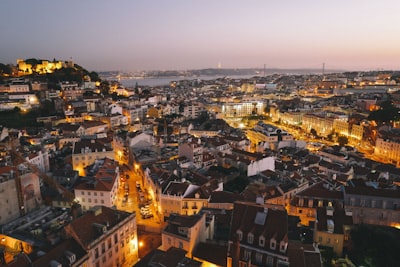
Belém Belém is a historic neighborhood in Lisbon that is home to some of the city's most iconic landmarks. The Jerónimos Monastery is a stunning example of Manueline architecture and a UNESCO World Heritage Site. The Belém Tower, a 16th-century fortified tower, is another must-see attraction in the area. Visitors can also explore the Padrão dos Descobrimentos, a monument commemorating Portugal's Age of Discovery, and the Museu Nacional dos Coches, which houses an impressive collection of historic royal carriages. Praça do Comércio Praça do Comércio, also known as Terreiro do Paço, is a grand public square located on the banks of the Tagus River. The square is surrounded by impressive 18th-century buildings and is dominated by the Arco da Rua Augusta, a triumphal arch that offers panoramic views of the city. Visitors can also explore the nearby Rua Augusta, a lively pedestrian street lined with shops, restaurants, and street performers. Castelo de São Jorge The Castelo de São Jorge is a Moorish castle that sits atop one of Lisbon's seven hills. The castle offers stunning views of the city and the Tagus River, and visitors can explore the castle's walls, towers, and archaeological ruins. The castle also houses a museum that showcases the history of Lisbon and the castle itself. Elevador de Santa Justa The Elevador de Santa Justa is a unique elevator that was designed by Gustave Eiffel and provides access to the Largo do Carmo, a historic square in the Chiado neighborhood. The elevator offers panoramic views of the city and is a popular spot for both tourists and locals. Mercado da Ribeira The Mercado da Ribeira is Lisbon's main food market and a popular destination for foodies. The market features a variety of stalls selling fresh produce, seafood, and traditional Portuguese delicacies. Visitors can also find a selection of high-end restaurants and gourmet food shops within the market. Miradouros Lisbon is known for its stunning viewpoints, or miradouros, that offer panoramic views of the city. Some of the most popular miradouros include the Miradouro de São Pedro de Alcântara, the Miradouro da Graça, and the Miradouro das Portas do Sol. Bairro Alto Bairro Alto is a lively neighborhood known for its vibrant nightlife and cultural attractions. Visitors can explore the neighborhood's narrow streets, lined with colorful buildings and filled with bars, restaurants, and live music venues.
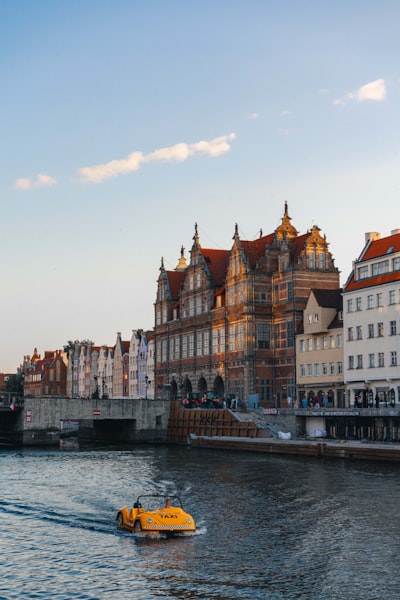
The Old Town of Gdansk is a must-visit for any traveler to the city. This historic district is known for its beautifully preserved medieval and Renaissance architecture, including the iconic Neptun Fountain, the Artus Court, and the Basilica of St. Mary. Stroll along the charming cobblestone streets, browse the local shops and galleries, and stop for a traditional Polish meal in one of the many cafes and restaurants. The Gdansk Shipyard is a significant historical site, as it was the birthplace of the Solidarity movement that played a crucial role in the fall of communism in Poland. Visitors can explore the shipyard's grounds, visit the European Solidarity Centre museum, and learn about the region's rich industrial heritage. The Oliwa Cathedral is a stunning example of Baroque architecture and one of the most impressive religious structures in Gdansk. The cathedral's interior is particularly noteworthy, with intricate carvings, ornate altars, and a magnificent pipe organ that dates back to the 18th century. The Westerplatte Peninsula is the site of the first battle of World War II, where Polish forces bravely defended against the German invasion in 1939. Today, the peninsula is a memorial park, with monuments and museums that commemorate the events of that fateful day. The Gdansk Crane, also known as the "Crane of Gdansk," is a historic landmark that once served as a loading crane for the city's port. The crane is now a museum, offering visitors the opportunity to learn about its fascinating history and the role it played in Gdansk's maritime trade. The Amber Museum is a must-visit for anyone interested in the history and significance of amber, a precious gemstone that has been found in abundance along the Baltic coast. The museum showcases a vast collection of amber artifacts, including jewelry, sculptures, and even prehistoric insects trapped in the fossilized resin. The Uphagen House is a beautifully preserved 18th-century merchant's house that provides a glimpse into the lives of Gdansk's wealthy elite during the city's golden age. Visitors can explore the meticulously restored interiors, which feature period furnishings and artwork, and learn about the history of the Uphagen family. The Gdansk Ferris Wheel, located on the banks of the Motlawa River, offers stunning panoramic views of the city and its historic skyline. Ride to the top for a bird's-eye view of the Old Town, the Gdansk Shipyard, and the surrounding waterways. The Sopot Pier is a beloved landmark in the nearby seaside town of Sopot, which is easily accessible from Gdansk. This iconic wooden pier stretches out into the Baltic Sea, offering visitors the chance to stroll, relax, and take in the stunning coastal scenery. The Abbots' Palace, located in the Oliwa district of Gdansk, is a magnificent Baroque-style palace that once served as the residence of the Abbots of Oliwa. Today, the palace houses a museum that showcases the region's history and culture, as well as a beautiful park and gardens. The Gdansk Shakespeare Theatre is a modern performance venue that pays homage to the city's rich theatrical heritage. Attend a production of one of Shakespeare's plays or explore the theatre's interactive exhibits and displays. The Gdansk Aquarium is a popular attraction for families, featuring a diverse collection of marine life from the Baltic Sea and beyond. Visitors can observe seals, penguins, and a variety of fish species in their carefully designed habitats. The Gdansk Botanical Garden is a serene oasis in the heart of the city, offering visitors the chance to stroll through beautifully landscaped gardens and explore a wide variety of plant species from around the world. The Gdansk Museum of the Second World War is a state-of-the-art museum that provides a comprehensive and thought-provoking exploration of the events and impact of World War II, with a particular focus on the Polish experience.
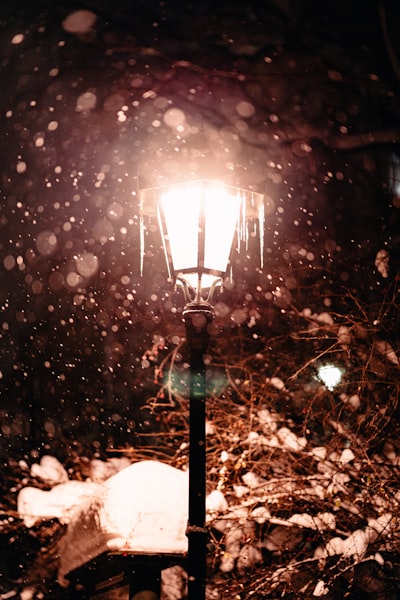
The Main Market Square (Rynek Główny) The Main Market Square is the heart of Krakow's Old Town and a UNESCO World Heritage Site. It is one of the largest medieval town squares in Europe, surrounded by historic buildings, churches, and cafes. The centerpiece is the Cloth Hall, a Renaissance-era trading hall, and the iconic St. Mary's Basilica with its two asymmetrical towers. Wawel Royal Castle and Cathedral Wawel Hill is home to the Wawel Royal Castle, a former residence of Polish kings, and the Wawel Cathedral, the coronation site of Polish monarchs. Highlights include the opulent State Rooms, the Dragon's Den, and the stunning cathedral interiors with royal tombs and chapels. Kazimierz - The Former Jewish Quarter Kazimierz, Krakow's former Jewish quarter, is a vibrant neighborhood with synagogues, Jewish cemeteries, and cafes. Explore the historic Remuh Synagogue, the Old Synagogue, and the Galicia Jewish Museum to learn about Krakow's rich Jewish heritage. Schindler's Factory Museum The Schindler's Factory Museum is housed in the former enamelware factory of Oskar Schindler, the German businessman who saved the lives of over a thousand Polish Jews during the Holocaust. The museum offers a poignant and immersive look at life in Krakow under Nazi occupation. Wieliczka Salt Mine The Wieliczka Salt Mine, a UNESCO World Heritage Site, is an underground labyrinth of tunnels, chambers, and chapels carved entirely out of salt. Highlights include the Chapel of St. Kinga, a stunning cathedral-like space with salt chandeliers and altars. Planty Park Planty Park is a picturesque green belt that surrounds Krakow's Old Town, built on the site of the former city walls and moats. It's a lovely spot for a stroll, with lush gardens, fountains, and views of the historic city center. St. Florian's Gate and the Barbican St. Florian's Gate is one of the remaining structures of the historic city fortifications, and the Barbican is a well-preserved circular fortified outpost that was once part of the city's defenses. Kościuszko Mound The Kościuszko Mound is a man-made hill offering panoramic views of Krakow. It was built in the 19th century to commemorate the Polish national hero, Tadeusz Kościuszko, and provides an excellent vantage point to admire the city's skyline. Jagiellonian University and the Collegium Maius The Jagiellonian University, founded in 1364, is one of the oldest universities in the world. The Collegium Maius, the university's oldest building, features a beautiful Gothic courtyard and houses a museum with historic scientific instruments and furnishings. The Cloth Hall (Sukiennice) The Cloth Hall, located in the heart of the Main Market Square, is a Renaissance-era trading hall that now houses a gallery of Polish art and handicrafts. Visitors can browse the stalls and shops for traditional Polish souvenirs. St. Mary's Basilica St. Mary's Basilica is a stunning Gothic church with two asymmetrical towers and intricate interior decorations, including the famous wooden altarpiece carved by Veit Stoss. Wawel Dragon's Den The Wawel Dragon's Den is a cave beneath Wawel Hill that is said to have been the lair of the legendary Wawel Dragon. Visitors can explore the cave and learn about the mythical creature that once terrorized the city. Nowa Huta - Socialist Realist Architecture Nowa Huta, a district on the outskirts of Krakow, was built in the 1950s as a model socialist city. It features impressive examples of Socialist Realist architecture, including the central square, housing blocks, and the massive steelworks.

Ålesund Fjord and Islands Ålesund is situated on a series of islands, providing visitors with ample opportunities to explore the stunning fjords and islands that surround the town. Take a boat tour to witness the dramatic cliffs, crystal-clear waters, and quaint fishing villages that dot the landscape. Don't miss the chance to visit the nearby islands of Giske and Godøy, which offer hiking trails, beaches, and panoramic views. Aksla Viewpoint Climb the 418 steps to the top of Aksla, a mountain that overlooks the town of Ålesund. From the summit, you'll be rewarded with breathtaking 360-degree views of the town, the surrounding fjords, and the distant mountains. This is one of the most iconic and popular attractions in Ålesund, offering a truly unforgettable experience. Art Nouveau Architecture Ålesund is renowned for its exceptional Art Nouveau architecture, which was rebuilt after a devastating fire in 1904. Stroll through the town's charming streets and admire the intricate facades, ornate details, and whimsical spires that characterize this unique architectural style. Be sure to visit the Jugendstilsenteret, a museum dedicated to the Art Nouveau movement in Ålesund. Ålesund Aquarium Explore the diverse marine life of the Norwegian coast at the Ålesund Aquarium. See a variety of fish, seals, and other aquatic creatures in their natural habitats, and learn about the region's rich marine ecosystem. The aquarium also features interactive exhibits and educational displays, making it a great destination for families and nature enthusiasts. Geirangerfjord While not directly in Ålesund, the Geirangerfjord is a must-see attraction that is easily accessible from the town. This UNESCO World Heritage Site is renowned for its towering cliffs, cascading waterfalls, and pristine, turquoise waters. Take a scenic boat tour or hike along the fjord's trails to fully immerse yourself in the breathtaking natural beauty of this iconic Norwegian landscape. Sunnmøre Museum Gain insight into the rich cultural heritage of the Sunnmøre region at the Sunnmøre Museum. This open-air museum features historic buildings, traditional crafts, and exhibits that showcase the area's fishing, farming, and maritime traditions. Wander through the museum's charming streets and interact with costumed interpreters to experience a glimpse of life in bygone eras. Whether you're drawn to the town's architectural wonders, its stunning natural landscapes, or its cultural heritage, Ålesund offers a wealth of must-see attractions that will leave a lasting impression on your travels.
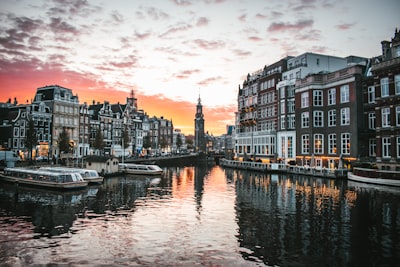
The Anne Frank House is a poignant and moving experience that allows visitors to step into the secret annex where Anne Frank and her family hid from the Nazis during World War II. Touring the historic building and learning about Anne's life and tragic fate is a powerful and unforgettable part of any visit to Amsterdam. The Rijksmuseum is the Netherlands' national museum and home to an incredible collection of Dutch Golden Age paintings, including masterpieces by Rembrandt, Vermeer, and Frans Hals. Highlights include Rembrandt's The Night Watch and Vermeer's The Milkmaid. The museum's stunning architecture and beautifully curated galleries make it a must-see for art and history lovers. The Van Gogh Museum houses the world's largest collection of works by the iconic Dutch post-impressionist painter Vincent van Gogh. Visitors can admire famous paintings like Sunflowers, The Bedroom, and Starry Night Over the Rhone, as well as learn about Van Gogh's tumultuous life and artistic development. The Jordaan neighborhood is a charming, picturesque area of Amsterdam known for its quaint streets, cozy cafes, and unique boutiques. Wandering through the Jordaan's picturesque canals and alleyways is a wonderful way to experience the city's historic character and local culture. The Bloemenmarkt, or Flower Market, is a vibrant and colorful floating flower market located along the Singel canal. Visitors can browse stalls selling a dazzling array of tulips, orchids, and other blooms, as well as purchase bulbs, seeds, and other gardening products. The Heineken Experience is an interactive and immersive tour of the historic Heineken brewery, where visitors can learn about the beer-making process, sample fresh Heineken, and even pour their own perfect pint. The Vondelpark is a sprawling, 120-acre urban oasis in the heart of Amsterdam. Visitors can stroll, bike, or rollerblade through the park's lush greenery, visit the open-air theater, or relax at one of the many cafes and restaurants. The Red Light District, or De Wallen, is Amsterdam's infamous adult entertainment district, known for its neon-lit windows, sex shops, and legalized prostitution. While controversial, the district offers a unique glimpse into Amsterdam's liberal and tolerant culture. The Begijnhof is a hidden courtyard that dates back to the 14th century and was once home to a community of Beguines, a group of devout Catholic women. The peaceful, historic site features charming houses and the hidden Begijnhof Chapel, offering a serene respite from the bustling city. The Amsterdam Dungeon is a thrilling, interactive experience that brings the city's dark history to life through live actors, special effects, and theatrical storytelling. Visitors can explore the dungeon's grim chambers and learn about Amsterdam's gruesome past.
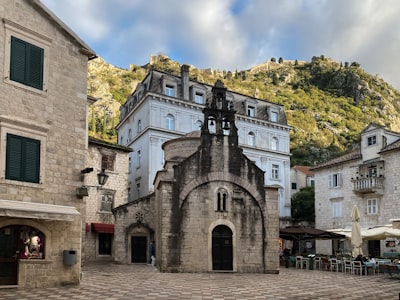
The Old Town of Kotor The Old Town of Kotor is a well-preserved medieval city that dates back to the 12th century. Wander through the narrow, winding streets and admire the Venetian architecture, including the Cathedral of Saint Tryphon, a Romanesque-Gothic cathedral built in the 12th century. Climb the city walls for breathtaking views of the bay and the surrounding mountains. St. Tryphon's Cathedral The Cathedral of Saint Tryphon is the most prominent landmark in Kotor's Old Town. This Romanesque-Gothic cathedral was built in the 12th century and features impressive stone carvings, frescoes, and an ornate altar. Visitors can explore the cathedral's interior and learn about its rich history. The Kotor City Walls The Kotor City Walls are a remarkable fortification system that snakes up the mountainside, offering stunning panoramic views of the Bay of Kotor. Visitors can climb the 1,350 steps to the top of the walls, which provide a unique perspective of the town and the surrounding landscape. The Maritime Museum The Maritime Museum in Kotor showcases the town's rich seafaring history. Exhibits include model ships, nautical instruments, and artifacts from Kotor's maritime past. Visitors can learn about the town's role as an important trading port and the lives of Kotor's seafaring residents. The Perast The picturesque town of Perast, located just a short drive from Kotor, is a must-visit destination. Stroll along the waterfront promenade, admire the Baroque architecture, and visit the two small islands in the bay, Our Lady of the Rocks and St. George. Our Lady of the Rocks Our Lady of the Rocks is a man-made island in the Bay of Kotor, accessible by boat from Perast. The island is home to a 17th-century church and museum, which display a collection of votive paintings, silver, and other artifacts related to the island's history. St. George Island St. George Island is a natural island in the Bay of Kotor, home to a Benedictine monastery that dates back to the 12th century. Visitors can explore the island's peaceful surroundings and learn about its religious history. Lovcen National Park Lovcen National Park, located just a short drive from Kotor, offers stunning mountain scenery and hiking opportunities. Visitors can hike to the top of Mount Lovcen, which offers panoramic views of the Bay of Kotor and the surrounding landscape. Budva The coastal town of Budva, located just a short drive from Kotor, is a popular destination for its beautiful beaches, historic old town, and vibrant nightlife. Visitors can explore the Venetian-era walls, wander through the charming streets, and enjoy the lively atmosphere. Sveti Stefan Sveti Stefan is a picturesque island resort, connected to the mainland by a narrow isthmus. The island is known for its charming, historic architecture and stunning views of the Adriatic Sea. Visitors can explore the island's narrow streets, visit the Church of St. Stefan, and enjoy the luxury amenities of the resort. In conclusion, Kotor and the surrounding area offer a wealth of must-see attractions for travelers. From the well-preserved Old Town and impressive city walls to the stunning natural landscapes of Lovcen National Park, there is something for everyone in this beautiful corner of Montenegro.
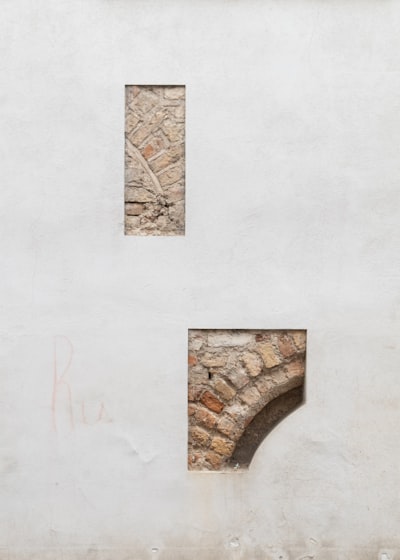
Vilnius Old Town: Designated as a UNESCO World Heritage Site, the Old Town of Vilnius is a charming and well-preserved medieval city center. Wander through the cobblestone streets, admire the Baroque architecture, and discover hidden courtyards and alleyways. Don't miss the iconic Gates of Dawn, a historic city gate with a chapel housing a revered icon of the Virgin Mary. Gediminas Castle Tower: Perched atop a hill, the Gediminas Castle Tower offers panoramic views of the city. This historic landmark was once the seat of the Grand Duchy of Lithuania and is now a popular tourist attraction. Climb to the top of the tower for stunning vistas of Vilnius and the Neris River. Cathedral Square and Cathedral Basilica: The Cathedral Square is the heart of Vilnius, featuring the impressive Cathedral Basilica, a stunning example of Gothic and Renaissance architecture. Admire the intricate façade and step inside to marvel at the ornate interiors and the crypt, which houses the remains of Lithuanian rulers. Church of St. Anne: This stunning Gothic church, with its delicate brick façade and intricate decorations, is considered one of the most beautiful examples of Lithuanian Gothic architecture. The church is a must-visit for its architectural beauty and the stunning views from the nearby Bernadine Gardens. The Gates of Dawn: The Gates of Dawn, also known as the Ausros Vartai, is a historic city gate that once served as a defensive structure. Today, it houses a chapel with a revered icon of the Virgin Mary, making it a significant religious site for both locals and visitors. Užupis: Explore the bohemian neighborhood of Užupis, known for its artistic flair and alternative culture. Wander through the charming streets, admire the street art, and visit the Užupis Republic, a self-declared independent republic within Vilnius with its own constitution and flag. National Museum of Lithuania: Delve into the rich history and culture of Lithuania at the National Museum of Lithuania. The museum's extensive collection includes archaeological artifacts, ethnographic exhibits, and displays on the country's political and social history. Trakai Island Castle: Take a day trip to the picturesque town of Trakai, located just a short distance from Vilnius. Visit the Trakai Island Castle, a stunning 14th-century castle situated on an island in Lake Galvė, and explore the surrounding natural beauty. These are the must-see attractions that will provide you with a comprehensive and unforgettable experience in Vilnius, Lithuania. From the charming Old Town to the historic landmarks and cultural gems, this city is sure to captivate and inspire you.
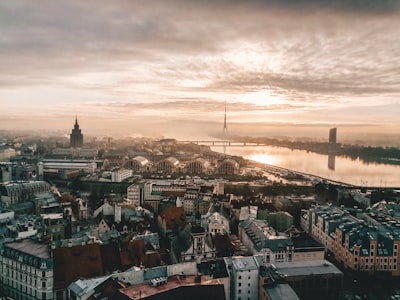
The Old Town of Riga is a UNESCO World Heritage Site and the heart of the city. Wander through the charming cobblestone streets, admire the medieval architecture, and visit landmarks like the Riga Cathedral, the House of the Blackheads, and the Three Brothers buildings. The Riga Castle is a historic castle that has served as the residence of the Livonian Order's Master, the Polish-Lithuanian Commonwealth's representatives, and the Dukes of Courland. Today it houses the Latvian National History Museum, which offers fascinating insights into the country's past. The Dome Cathedral is one of the largest medieval churches in the Baltic region. Admire its impressive Gothic architecture, intricate stained glass windows, and the famous Buchholz organ, one of the largest in Europe. The Art Nouveau District is a unique neighborhood known for its stunning early 20th-century buildings adorned with elaborate facades, decorative elements, and whimsical details. Take a guided tour to fully appreciate the architectural gems. The Central Market of Riga is one of the largest and oldest markets in Europe. Explore the bustling stalls selling fresh produce, local delicacies, handicrafts, and more. Don't miss the opportunity to sample traditional Latvian cuisine. The Latvian Ethnographic Open-Air Museum showcases the country's rich cultural heritage. Wander through the historic wooden buildings, farmsteads, and windmills, and learn about the traditional way of life in Latvia. The Nativity of Christ Cathedral is an impressive Orthodox cathedral with stunning blue domes and intricate interior decorations. It's a beautiful example of Russian-Byzantine architecture. The Freedom Monument is a symbol of Latvia's independence and a must-visit landmark. Admire the impressive granite structure and the statue of a woman holding three stars, representing the country's three historical regions. The Riga TV Tower is the tallest tower in the Baltics, offering panoramic views of the city from its observation deck. It's a great spot to get a bird's-eye view of Riga's skyline.

1. Riomaggiore: The southernmost of the five villages, Riomaggiore is known for its colorful houses, narrow streets, and the iconic Via dell'Amore (Lover's Lane), a scenic coastal path that connects it to the neighboring town of Manarola. 2. Manarola: Perched on a rocky promontory, Manarola is renowned for its charming harbor, vibrant buildings, and the Sentiero Azzurro (Blue Trail), a hiking path that offers breathtaking views of the coastline. 3. Corniglia: The only village in the Cinque Terre that is not directly on the sea, Corniglia is situated atop a steep cliff and can be reached by a long staircase or a shuttle bus. Explore the quaint town square, visit the Church of St. Peter, and enjoy the panoramic vistas from the Belvedere. 4. Vernazza: Considered by many to be the most picturesque of the five villages, Vernazza boasts a natural harbor, a medieval castle, and a charming main square lined with cafes and restaurants. Don't miss the opportunity to hike the trails that lead to stunning viewpoints overlooking the town. 5. Monterosso al Mare: The largest of the Cinque Terre villages, Monterosso al Mare features a long sandy beach, a historic old town, and the impressive Church of St. John the Baptist. Explore the town's narrow streets, visit the Statue of the Giant, and enjoy the local seafood specialties. 6. Parco Nazionale delle Cinque Terre: The Cinque Terre National Park is a UNESCO World Heritage Site that encompasses the five villages and the surrounding natural landscape. Hike the scenic trails, discover hidden coves and beaches, and immerse yourself in the region's rich cultural heritage. 7. Santuario di Nostra Signora di Montenero: Located just outside of Riomaggiore, this historic sanctuary offers stunning views of the Cinque Terre coastline and is a popular pilgrimage site for visitors.
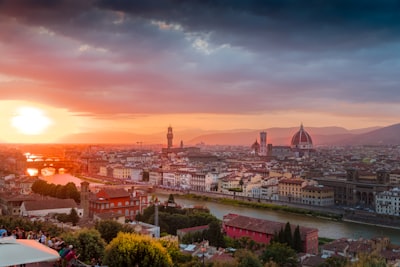
The Duomo (Cathedral of Santa Maria del Fiore) The Duomo is the iconic centerpiece of Florence and one of the most impressive cathedrals in the world. Climb to the top of the dome for stunning panoramic views of the city. Admire the intricate Gothic architecture and the stunning bronze doors designed by Lorenzo Ghiberti. Galleria dell'Accademia Home to Michelangelo's famous statue of David, the Galleria dell'Accademia is a must-visit for art lovers. The 17-foot marble statue is a true masterpiece and a highlight of any trip to Florence. Uffizi Gallery One of the world's greatest art museums, the Uffizi Gallery houses an incredible collection of Renaissance art, including works by Botticelli, Raphael, Michelangelo, and Leonardo da Vinci. Don't miss iconic paintings like Botticelli's "The Birth of Venus" and Raphael's "The Madonna of the Goldfinch." Piazza della Signoria This lively public square is the heart of Florence's historic center. Admire the impressive Palazzo Vecchio, the Loggia dei Lanzi, and the stunning Neptune Fountain. The square is also home to several statues, including a replica of Michelangelo's David. Ponte Vecchio The iconic Ponte Vecchio bridge is one of the most famous landmarks in Florence. Stroll across the bridge, which is lined with charming jewelry shops, and enjoy the views of the Arno River. Basilica of Santa Croce This Franciscan church is the burial site of some of Italy's most famous figures, including Michelangelo, Galileo, and Machiavelli. Admire the stunning Gothic architecture and the beautiful frescoes adorning the interior. Palazzo Pitti and the Boboli Gardens The Palazzo Pitti is a vast Renaissance palace that now houses several museums, including the Palatine Gallery, the Royal Apartments, and the Modern Art Gallery. Explore the stunning Boboli Gardens, a vast and beautiful Renaissance-style park behind the palace. Piazzale Michelangelo For the best panoramic views of Florence, head to the Piazzale Michelangelo, a hilltop square overlooking the city. Enjoy the stunning vistas and watch the sunset over the Duomo and the Arno River. Basilica of San Lorenzo This impressive church is one of the largest in Florence and is known for its beautiful Renaissance architecture. Inside, you'll find the Medici Chapels, the burial site of the powerful Medici family. Mercato Centrale Explore the lively Mercato Centrale, a bustling indoor market where you can sample delicious local produce, artisanal foods, and traditional Florentine cuisine.
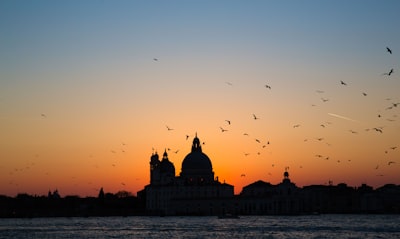
St. Mark's Square (Piazza San Marco) is the heart of Venice and one of the most famous public squares in the world. Surrounded by stunning architecture, including the iconic St. Mark's Basilica, the Doge's Palace, and the Campanile bell tower, it's a must-visit destination. Spend time exploring the square, admiring the Byzantine-style St. Mark's Basilica, and watching the lively activity around you. The Grand Canal is the main waterway in Venice and a sight to behold. Take a gondola ride or water bus (vaporetto) along the canal to see the beautiful palaces, churches, and bridges that line the banks. The Rialto Bridge, one of the most recognizable landmarks in Venice, is a popular spot to admire the Grand Canal. The Doge's Palace (Palazzo Ducale) is a stunning Gothic-style palace that was the former residence of the Venetian ruler, the Doge. Explore the opulent interiors, including the lavish Sala del Maggior Consiglio (Hall of the Great Council) and the Bridge of Sighs, which connects the palace to the former prison. St. Mark's Basilica is a magnificent example of Italo-Byzantine architecture, known for its ornate gold mosaics and stunning interior. Admire the intricate details and the impressive Pala d'Oro, a golden altarpiece adorned with precious stones. The Gallerie dell'Accademia is a renowned art museum that houses an impressive collection of Venetian art, including works by Bellini, Titian, Tintoretto, and Veronese. Spend time exploring the galleries and immersing yourself in the rich artistic heritage of Venice. The Burano Island is a colorful fishing island known for its lace-making tradition. Wander through the charming streets, admire the brightly painted houses, and visit the Lace Museum to learn about the island's renowned lace-making craft. The Murano Island is famous for its glass-making industry. Visit one of the glass factories to witness the skilled artisans at work and learn about the history and techniques of Murano glass. You can also browse the shops and galleries to purchase unique glass souvenirs. The Rialto Market is a bustling outdoor market located near the Rialto Bridge. Explore the stalls selling fresh produce, seafood, and other local delicacies, and immerse yourself in the vibrant atmosphere of this historic market.
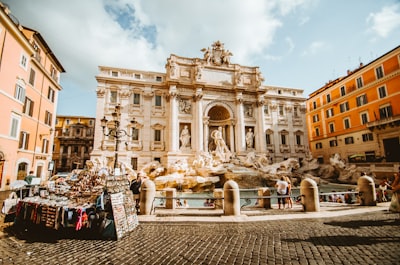
The Colosseum The Colosseum is one of the most iconic landmarks in Rome and a must-see for any visitor. This massive amphitheater, built in the 1st century AD, was the site of ancient Roman gladiatorial contests and public spectacles. Visitors can explore the different levels of the Colosseum and learn about its rich history. The Roman Forum and Palatine Hill Adjacent to the Colosseum, the Roman Forum and Palatine Hill offer a glimpse into the heart of ancient Rome. Wander through the ruins of temples, basilicas, and other important buildings that were once the center of political and social life in the Roman Empire. The Trevi Fountain The Trevi Fountain is one of the most famous fountains in the world. This Baroque masterpiece, featuring the god Oceanus and his tritons, is a popular spot for visitors to toss a coin and make a wish. The Pantheon The Pantheon is a well-preserved ancient Roman temple that has been converted into a church. Admire the impressive dome and the intricate architectural details of this iconic building. St. Peter's Basilica and the Vatican No trip to Rome would be complete without a visit to the Vatican City, the headquarters of the Catholic Church. Explore the magnificent St. Peter's Basilica, with its stunning Renaissance architecture and the iconic Michelangelo-designed dome. Don't miss the opportunity to visit the Vatican Museums, which house an impressive collection of art and artifacts, including the Sistine Chapel. The Catacombs Beneath the streets of Rome lie the ancient catacombs, underground burial sites that were used by early Christians. Visitors can explore these eerie and fascinating underground networks, learning about the history and significance of these sacred spaces. The Castel Sant'Angelo Formerly a mausoleum for the Roman emperor Hadrian, the Castel Sant'Angelo is now a museum and one of the most iconic landmarks in Rome. Climb to the top of the castle for stunning views of the city. The Spanish Steps The Spanish Steps, a grand staircase leading up to the Trinità dei Monti church, are a popular meeting spot and a great place to people-watch. Climb the steps for panoramic views of the city. The Borghese Gallery The Borghese Gallery is home to an impressive collection of art, including works by Bernini, Caravaggio, and Raphael. Visitors can admire these masterpieces in the beautiful setting of the Borghese Villa. The Catacombs of Priscilla In addition to the more well-known catacombs, the Catacombs of Priscilla offer a unique opportunity to explore an ancient Christian burial site. Discover the intricate frescoes and underground chapels that provide a glimpse into the early history of Christianity in Rome.